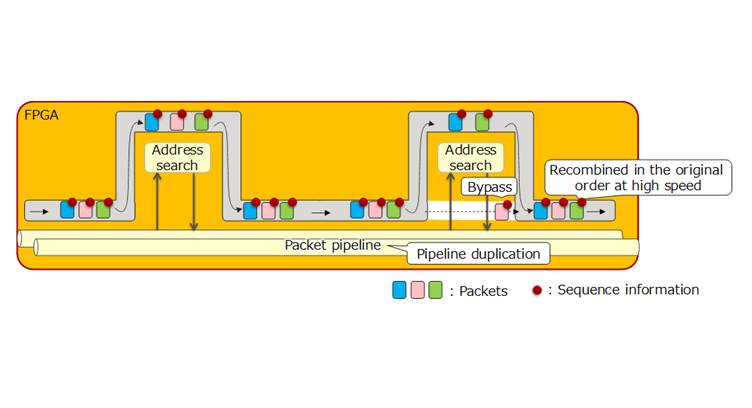Fujitsu on Monday announced the development of technology to accelerate virtual routers, which play a major role in the functionality of networks in virtual environments.
Server virtualization, which concentrates multiple applications and the infrastructure functionality of network processing in a general-purpose server environment, is spreading beyond datacenters to the field of edge computing, including wireless base stations and Mobile Edge Computing (MEC). The technology also proves useful in areas including societal infrastructure with applications like traffic management, and in entertainment, where it can be used to deliver viewers content like sporting events. As data volumes increase and systems become increasingly complex, however, the CPU resources required for packet processing in a virtual network increase. This reduces the number of applications that can run on a single server, and leads to lower server aggregation rates.
To resolve this issue, Fujitsu Laboratories has now developed technology to accelerate packet address control, which had been a performance bottleneck, while also offloading the processing of router functions in the virtual network to field programmable gate arrays (FPGAs). This speeds up packet processing performance eighteen-fold compared with existing virtual routers, while reducing the use of CPU resources to about one thirteenth that of existing technology.
With this technology, Fujitsu Laboratories will deliver high performance virtual networks with a low computational burden, supporting the digital transformation of companies by improving server utilization efficiency for businesses that will use large volumes of data in the 5G era.
Using this technology, it is now possible to increase application server density. This will support the digital transformation of customers from the foundational level, improving server utilization efficiency in infrastructure business areas that use large volumes of data in the 5G era, particularly in base stations and MEC for carrier businesses, such as, for example, making it possible to operate a video distribution service for a stadium with fewer servers.






















